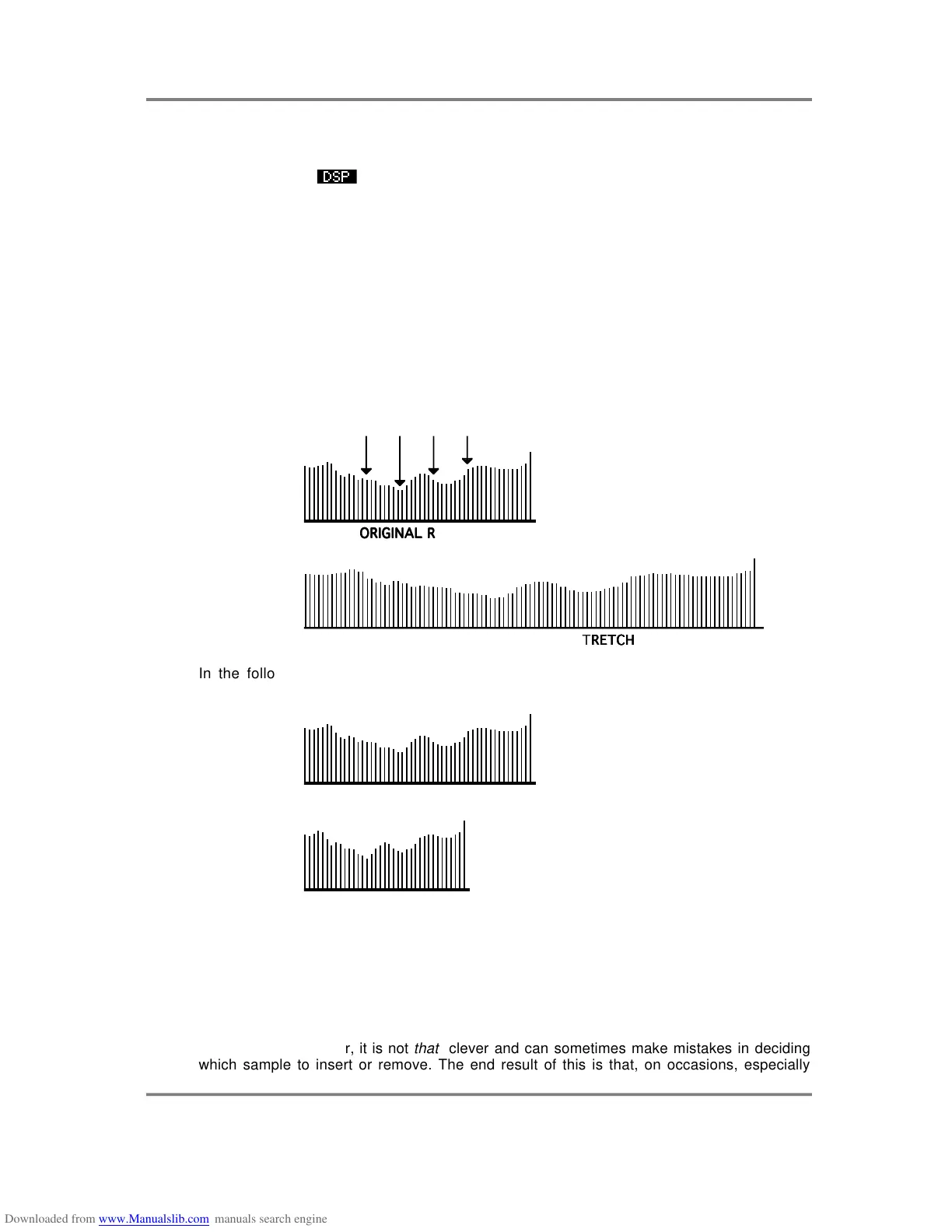EDIT SAMPLE
S3000XL Operator’s Manual Page 139
DSP FUNCTIONS - TIMESTRETCH, RE-SAMPLING AND EQ
The S3000XL has three powerful digital signal processing (DSP) functions which are
accessed via the key in the main SLCT page.
TIMESTRETCH
Timestretch allows you to alter the length of a sample, shortening it or lengthening it,
without changing its pitch. Before we look at how to operate the timestretch functions on
the S3000XL, let us first look briefly at how timestretch works.
Timestretch works by instructing the digital signal processor to analyse the signal and
insert or delete blocks of sample data at appropriate places and crossfades are used to
make the insertions and deletions as seamless as possible. This has the effect of
lengthening or shortening a recording. As you can see from the following diagram, blocks
of sample data have been inserted to create a 200% timestretch. The overall envelope of
the sound data is preserved but there is twice as much data in it causing it to play back
twice as slow.
SAMPLE DATA BLOCKS
In the following diagram, data has been carefully removed to make the recording play
back faster.
You can see that the length in both of these examples changes quite drastically but the
envelope remains pretty much the same, thereby ensuring the integrity of the sound. The
timestretch on the S3000XL works by making a copy of the original. It is necessary to
make a copy for two reasons - firstly, the S3000XL needs the original data to get the data
to insert. Secondly, in the event of a stretch going wrong, you still have the original to
revert to. Unfortunately, however, perfect results using timestretch are sometimes difficult
to achieve. It is not a limitation of software or hardware but due to the fact that, although
the processor is clever, it is not
that
clever and can sometimes make mistakes in deciding
which sample to insert or remove. The end result of this is that, on occasions, especially

